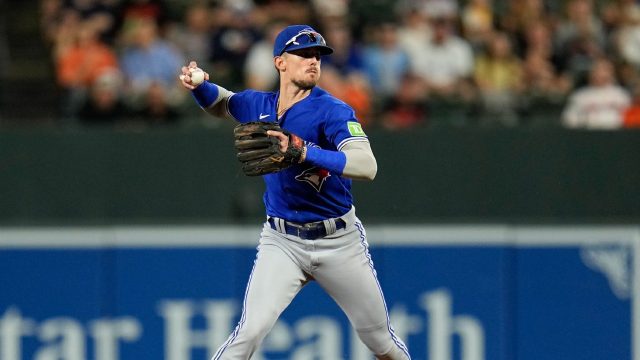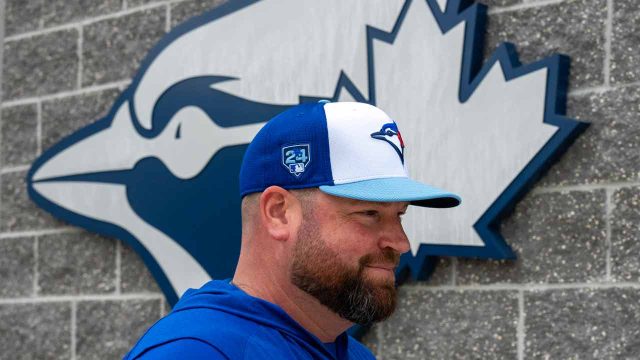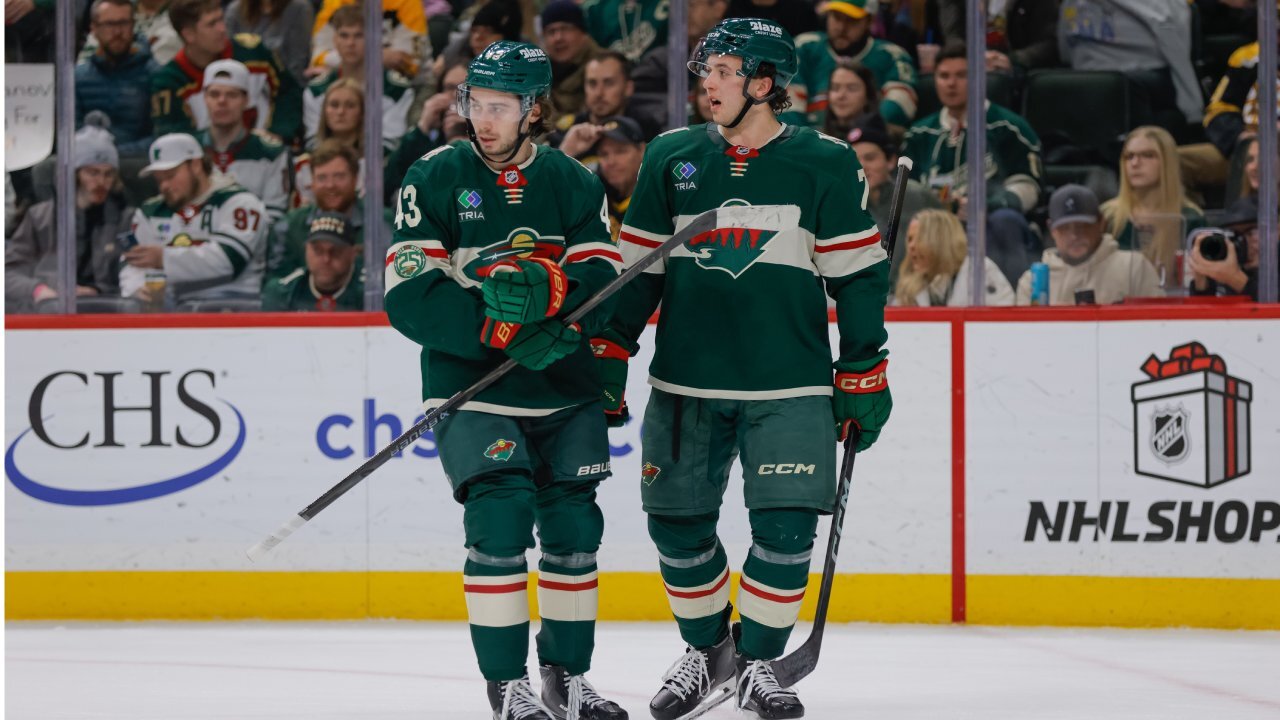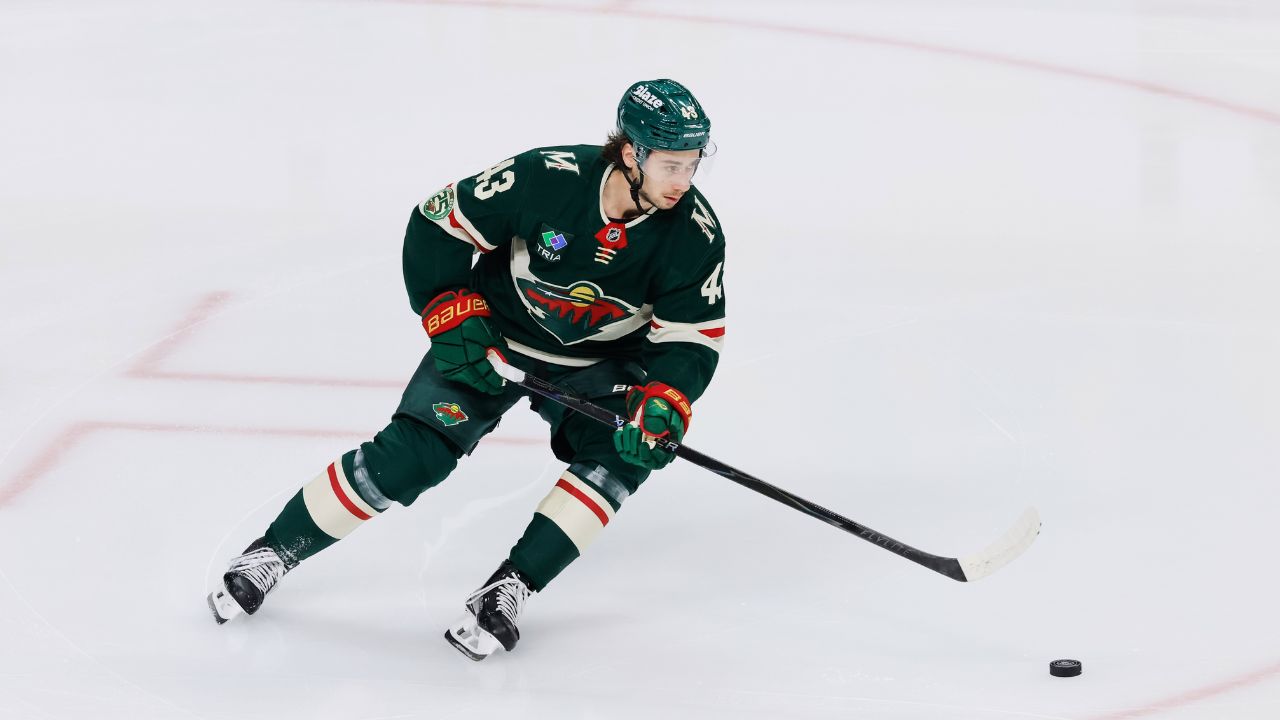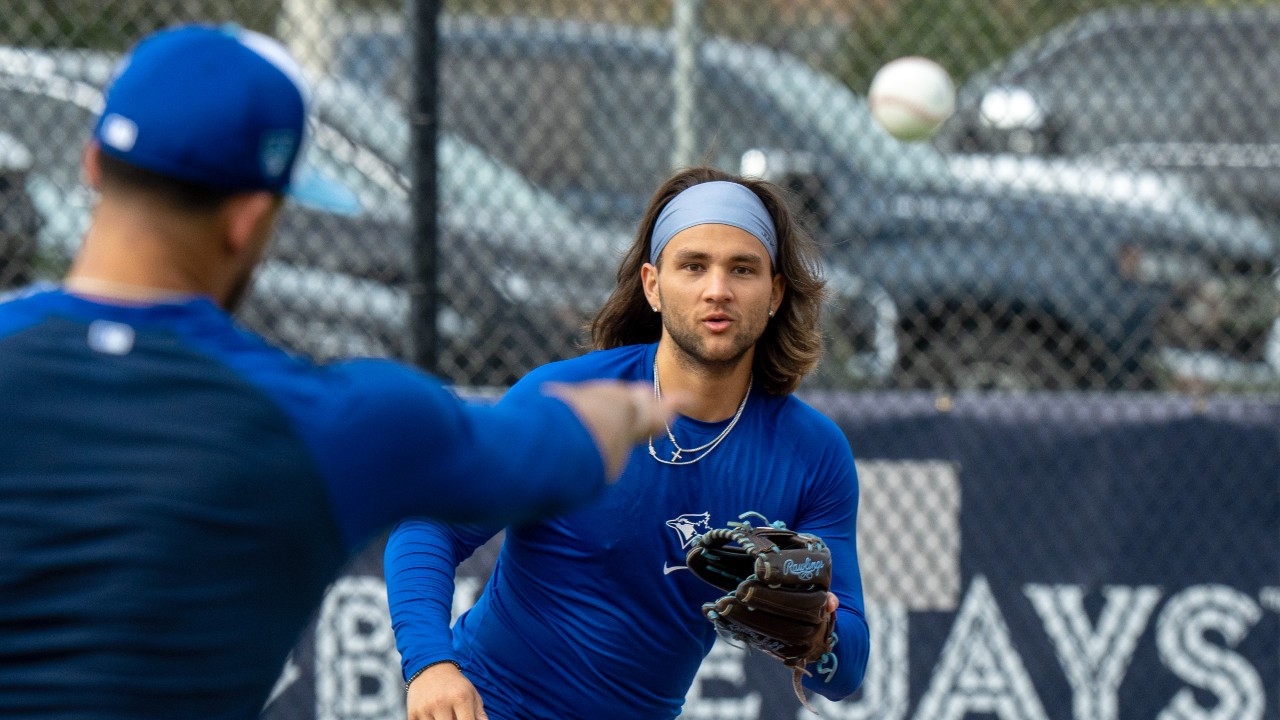
TAMPA, Fla. – Ross Atkins hadn’t spoken publicly since Jan. 3 when he arrived at George M. Steinbrenner Field for Major League Baseball’s Grapefruit League media day, so there was lots of ground to cover with the Toronto Blue Jays general manager.
A summation of the key items from Thursday’s session:
• The club continues “exploring” external additions, but the heavy lifting seems done as “at this point, additions that would be of significance would mean some level of subtraction.”
• The Blue Jays have improved this off-season through “the things that we’ve learned, the work that’s been put in by players, the work that’s been put in by staff and adjustments that we’ve made to support them.”
• Justin Turner will primarily serve as the DH and is someone “we’ve been recruiting and learning about over the years,” and the team is “really excited about the addition, his experiences, his track record as an offensive performer, the complement of the skillset to us, the contact ability, his at-bats.”
• Isiah Kiner-Falefa “will get a good chance to get a good number of at-bats” at third base, “but feel like we have really good options to balance that out,” Cavan Biggio among them.
• After taking Vladimir Guerrero Jr. to arbitration and losing, “it’s up to us ensure that it’s behind us. And that’s on me, not on Vladdy.”
• Alek Manoah is very much being positioned as the front-runner for a rotation spot, “his mindset, his confidence and his conviction, his focus on team, his focus on his teammates and the work that he’s put in,” all positive leading indicators.
• Cuban right-hander Yariel Rodriguez will be stretched out as a starter but since he didn’t pitch competitively after the World Baseball Classic last year, “we want to be respectful of what that feeling of competing at this level is going to mean and him trying to prove to us that he belongs in that spot.”
That’s the gist. Now, let’s do some unpacking.
Addition Means Subtraction
This an obvious place to start, since the free-agent market remains so abnormally stocked with talent that commissioner Rob Manfred was asked about it Thursday, revealing the players’ union rejected an MLB proposal for a signing period, “with a deadline that drove people to make their deals.”
While Manfred blamed player agents for using extended negotiations as a tactic, teams are just guilty in slow-playing the market. And you can look at the continued availability of Matt Chapman, the incumbent third baseman not fully replaced, and think maybe the Blue Jays are doing the latter here.
But in saying additions of significance would require (presumably commensurate) subtraction, Atkins essentially quashed that notion, likely due to both budgetary and roster reasons.
As things stand, the Blue Jays’ luxury tax payroll for 2024 stands at $248.7 million, as estimated by RosterResource, just past the midpoint between the first penalty threshold of $237 million but short of the second at $257 million. Maintaining a buffer from the second line gives the Blue Jays financial flexibility to potentially operate more aggressively in-season and ahead of the trade deadline, should opportunity arise.
As always, Atkins said “we can always present things” to the club’s ownership at Rogers Communications Inc. (which also operates this website), but intriguingly, he added: “From an operational standpoint, from the goals that we set out at the start of the year, now it makes most sense operationally for us if we consider additions that we should be subtracting, as well.”
In other words, they’re where they want to be financially for the time being, with the room to react to any opportunities that arise. If one does, it’s reasonable to assume the Blue Jays have done the legwork on how they could subtract from their roster to accommodate changes.
How The Blue Jays Are Better
Hard as it is to reconcile, once the aspirational pursuit of Shohei Ohtani failed, the Blue Jays shifted to a very cautiously prudent secondary plan that netted them Turner, Kiner-Falefa, Rodriguez and Kevin Kiermaier, who re-signed. Turner, especially, has a chance to make a big impact, but it also meant the club was depending on internal improvements to cover up last year’s gaps.
As a result, the adjustments the Blue Jays have made to their coaching staff, approach to game-planning and internal processes can’t just be window-dressing, they need to be transformational.
Most consequential in that regard is bench coach Don Mattingly taking over offensive co-ordinator duties, moving the hitting staff from a flat structure to a more hierarchical model.
Last season, Dave Hudgens handled the strategy end of game-planning while hitting coach Guillermo Martinez took care of the fundamentals. Now, Mattingly will be delivering both, with Martinez and hitting coach assistants Hunter Mense and Matt Hague beneath him.
The goal is to give “a lot more conviction and confidence to our players in how that message will be delivered and how it will be received,” said Atkins.
That combined with “the growth of players continuing, striving to improve and get better, not only physically but also fundamentally and mentally,” plus “the progress of players” in the system should, in Atkins’ estimation, help propel the Blue Jays forward.
Fitting The Pieces Together
Finding the playing time at second and third for Kiner-Falefa, Biggio, Santiago Espinal, Davis Schneider and perhaps Ernie Clement may be “a cool puzzle to solve,” in the words of manager John Schneider, but they’re also a lot of pieces vying for limited space. Turner may also get some reps at third base, further eating into the at-bats.
Kiner-Falefa is a strong defender at third but can play all around the diamond. So too can Biggio and Espinal, while Davis Schneider will be focused on second and left, with Clement able to be mixed in around them, should he grab the final bench spot.
The impression left by Atkins is that Kiner-Falefa and Biggio have the inside track right now, although he said, “this spring training will impact the initial deployment. … We’re going to have a lot of options, from the options that will start on the roster and the options that will be in triple-A.”
Prospects Orelvis Martinez and Addison Barger, both with big power, figure to be in that latter category, and Atkins walked a verbal tightrope when he said they “were up for the challenge” of the big-leagues when asked if they were ready for the majors.
No matter how he minced his words, what’s clear is that the Blue Jays have maintained a pathway to playing time for Martinez and/or Barger by not locking someone into either second or third. Re-signing Chapman would obviously close off the hot corner and while money and term still seems like the prime factors there, the potential of eventually incorporating one of the kids was a consideration, too.
“Listen, if we had the pathway to acquire … a significant-impact player (at third base), then you can’t let (blocking prospects) slow you down,” explained Atkins. “We considered those. But felt very good about … having those opportunities for players. And I do think it is important for every organization to have opportunities for young players. That wasn’t our marching order this year, that we’re going to keep a pathway for Orelvis or Addison or for Ricky (Tiedemann) or for Davis Schneider. But factoring that in as you consider your alternatives is certainly something that we were doing. So how big is the upgrade in those areas? And then what is the cost of that upgrade? And then what are the long-term implications of it?”
Given the cliff the Blue Jays are approaching after the 2025 season with the potential free agencies of Guerrero Jr., Bo Bichette, Chris Bassitt, Jordan Romano, Chad Green and Biggio, among others, the long-term implications really matter.
If they don’t start incorporating more players with extended years of contractual control into their core, this team will be in major trouble in two seasons. Martinez and Barger can help solve a down-the-line problem as well as a current problem if they can emerge, but for the time being, the Blue Jays will try to optimize the usage of their glut of infielders.
“An aspect of match-up is traditionally, not everyone, but many will think left-handed or right-handed, and I think there are a lot of more nuanced ways to think about that,” said Atkins. “Going more defensive-oriented versus contact-oriented, flyball versus groundball on both sides of the ball. Having those different options and having different profiles of players is obviously something we’ve leaned into.”
The Rotation
Manoah arrived in Dunedin, Fla., looking like someone determined to dominate again and the Blue Jays are counting on him to do just that. Rodriguez, with his $32-million, five-year deal, was the club’s biggest winter spend and while he’ll have a chance to be a starter in the majors if he regains a splitter he didn’t need as a fastball-slider reliever, it’s tough to see him being a season-long alternative this year.
Rodriguez’s lack of workload last year doesn’t necessarily “eliminate him,” from the fight for the fifth spot, said Atkins, “but it does make it something that we want to factor into his progression and not getting a little bit too short-sighted.”
If Manoah pitches like himself this year, the Blue Jays then need only to decide on who fills their final bullpen spot and whether Rodriguez is better served starting out in relief. If not though, Bowden Francis, Mitch White and Tiedemann are suddenly right in the rotation mix.
Guerrero’s Arbitration
A three-person panel ruled in favour of Guerrero’s $19.9-million ask rather than the Blue Jays’ $18.05-million offer but regardless, the club lost as soon as it ended up in arbitration with its all-star third baseman.
Atkins tried to play down the possibility of residual damage, saying “our interactions have been healthy and productive and as we move forward, they’ll be much more earnest in person when he arrives (at camp). It’s not something I’m worried about at all.”
At the same time, “I do acknowledge that it’s not an easy process,” he added. “These are stressful things to go through. We would love to avoid that. But money isn’t just the solution. There’s a process that’s in place that we have to be respectful of. We tried hard to avoid that hearing. We do not like going to hearings and would rather not be in a hearing with any player. Having said that, it’s in place for a reason. And when the gap is too big, we have to be respectful of that process.”
Guerrero attended his hearing in Phoenix, meaning he heard everything the lawyer hired by the Blue Jays to argue the case said about him. Atkins said while the team is “aware of the deck … a very, very large portion of the work is done by a professional attorney. What we work on is ensuring that nothing is personal and that we feel nothing will be taken in a way that is anything other than professional.”
Ultimately, only Guerrero knows whether they succeeded in that regard.


